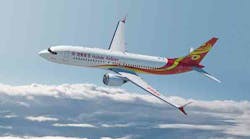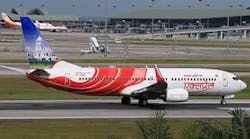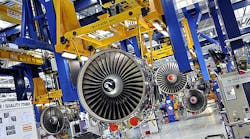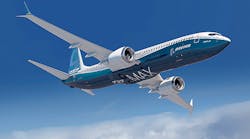Boeing Commercial Airplanes issued a 20-year forecast for new-aircraft orders from China, projecting demand for 6,330 new aircraft across numerous product categories, a total estimated at $950 billion.
The China forecast is the latest installment from Boeing’s Current Market Outlook series. In June the jet builder released results of its 20-year global outlook, forecasting demand for 38,050 new commercial aircraft, a volume it estimated at $5.6 trillion.
Earlier this month, it forecast the Indian market would demand 1,740 new aircraft over the 2015-2034 period, estimating that volume to be worth $240 billion.
China, however, is emerging as the world’s largest domestic air-travel market, and Boeing is its largest supplier of commercial airplanes, for passengers and cargo. "Despite the current volatility in China's financial market, we see strong growth in the country's aviation sector over the long term," according to Boeing’s v.p. – Marketing, Randy Tinseth.
China’s growing middle-class population and its greater mobility is driving much of the growth. The geographic expanse of the country, and the potential for developing new and under-served markets are another aspect of the broader trend.
"Over the next 20 years,” Tinseth continued, “China's commercial airplane fleet will nearly triple: from 2,570 airplanes in 2014 to 7,210 airplanes in 2034, with more than 70% of these deliveries accommodating growth."
Through 2034, Boeing is forecasting Chinese demand for 4,630 single-aisle jets, based especially on the demand from new carriers and low-cost airlines, as well as continuous expansion by established airlines.
China's low-cost carriers are currently responsible for about 8% of single-aisle market demand, but that percentage will rise to 25-30% of demand by 2034, Tinseth noted. "The 737 MAX 200 will have the lowest fuel costs – 20% per seat – versus today's most efficient single-aisle airplanes," Tinseth said. "737 MAX fuel efficiency and the 737's position as the industry's most reliable airplane offer Chinese low-cost carriers competitive advantages as they grow new business."
As for the larger aircraft segment, Boeing forecasts that Chinese carriers will order 1,510 new wide-body jets, notably the smaller and midsized models like the 777-300ER, 777X, and 787 Dreamliner.









